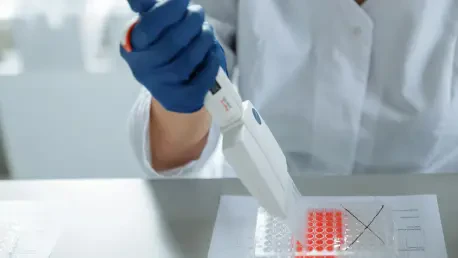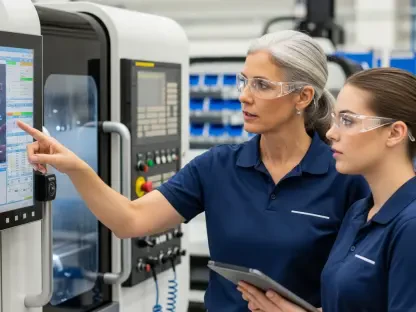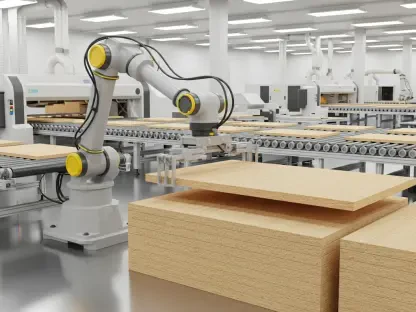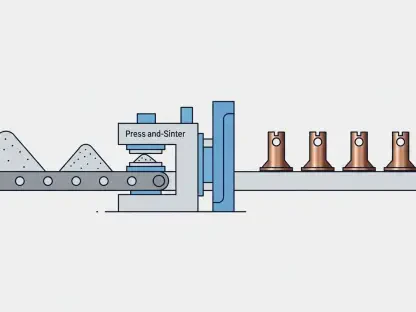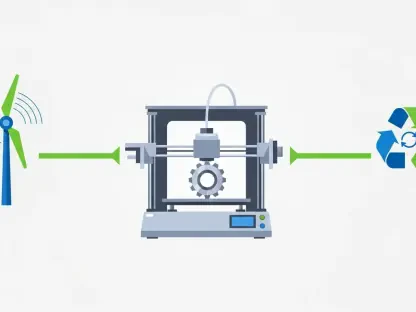The viral vector and plasmid DNA manufacturing market stands at the threshold of a transformative era, propelled by an escalating demand for gene therapies, vaccines, and personalized medical solutions that are reshaping the landscape of healthcare. These technologies, essential for delivering genetic material into cells for therapeutic purposes, have emerged as vital pillars of modern biotechnology, enabling groundbreaking treatments for everything from rare genetic disorders to widespread infectious diseases. The lingering effects of the COVID-19 pandemic have revealed both critical vulnerabilities and unprecedented opportunities within this sector, fundamentally altering its growth path. As the industry looks ahead from 2025 to 2035, a decade of remarkable expansion seems imminent, driven by innovation, investment, and an urgent need to address global health challenges. This exploration delves into the key forces fueling this market’s trajectory, examining how technological advancements and strategic responses to past crises are setting the stage for a revolution in medical therapies on a worldwide scale.
Fueling Expansion Through Demand and Innovation
The relentless rise in demand for gene therapies and cutting-edge vaccines represents a primary catalyst for the viral vector and plasmid DNA market’s growth over the coming decade. The resounding success of mRNA vaccines during the global health crisis underscored the immense potential of these technologies, galvanizing research efforts and accelerating development timelines. This heightened interest has spotlighted a pressing gap in manufacturing capacity, as the industry struggles to keep pace with the volume and complexity of therapeutic needs. Significant capital is being funneled into expanding production facilities and refining bioprocessing techniques to ensure scalability without compromising quality. As therapies move from experimental phases to widespread commercial use, the ability to produce viral vectors and plasmid DNA efficiently will be paramount in meeting patient needs and sustaining market momentum through 2035.
Beyond the surge in demand, technological innovation is playing a pivotal role in shaping the market’s future. Advances in bioprocessing, such as the adoption of single-use bioreactors and automated systems, are helping manufacturers tackle the dual challenges of cost and efficiency. These innovations are critical as the industry seeks to transition complex therapies from clinical trials to mass production while adhering to stringent regulatory standards. Additionally, the integration of digital tools and data analytics into manufacturing processes is enhancing precision and reducing waste, further driving down costs. The focus on innovation extends to workforce development as well, with companies partnering with academic institutions to cultivate a skilled talent pool capable of navigating this highly specialized field. This blend of technological progress and strategic planning is expected to underpin robust market growth over the next ten years.
Navigating Post-Pandemic Challenges and Opportunities
The COVID-19 pandemic delivered a profound shock to the viral vector and plasmid DNA manufacturing sector, disrupting supply chains and stalling clinical trials in its early stages. However, this crisis ultimately served as a powerful catalyst for transformation, compelling stakeholders to rethink operational models and prioritize resilience. The urgent global need for vaccines and novel therapies spurred rapid innovation, with manufacturers and governments collaborating to address bottlenecks in production and distribution. Today, the emphasis lies on fortifying infrastructure to withstand future disruptions, ensuring that the supply of these critical components remains uninterrupted. This shift in mindset reflects a broader commitment to preparedness, positioning the industry to better handle unexpected challenges as it grows through 2035.
In response to the lessons learned from the pandemic, substantial investments are being directed toward building flexible and scalable manufacturing systems. Major industry players are establishing new facilities and upgrading existing ones to boost capacity, while also exploring modular production approaches that can be quickly adapted to shifting demands. Strategic partnerships between biotech firms, pharmaceutical giants, and contract manufacturers have become increasingly common, fostering a collaborative ecosystem aimed at enhancing supply chain stability. These efforts are complemented by policy initiatives in many regions, where governments are offering incentives to bolster domestic production of viral vectors and plasmid DNA. Such adaptive strategies are not only mitigating risks but also creating a foundation for sustained expansion in a post-pandemic world.
Competitive Dynamics and Regional Growth Patterns
The competitive landscape of the viral vector and plasmid DNA market is marked by intense activity as leading companies strive to solidify their positions through expansion and innovation. Prominent players such as Fujifilm Diosynth Biotechnologies and Thermo Fisher Scientific are aggressively scaling up their manufacturing capabilities, investing in state-of-the-art facilities to capture a larger share of the growing demand. Strategic alliances and acquisitions are also on the rise, enabling firms to pool expertise and resources to accelerate product development. This dynamic environment underscores the importance of agility and foresight, as companies navigate a market characterized by rapid technological shifts and evolving therapeutic needs over the next decade.
Regionally, the market exhibits distinct patterns of growth and maturity that highlight varying opportunities and challenges. North America and Europe continue to lead, benefiting from advanced healthcare infrastructures, substantial research funding, and favorable regulatory frameworks that facilitate innovation. Meanwhile, the Asia-Pacific region is emerging as a powerhouse of growth, driven by increasing healthcare expenditures and a burgeoning biopharmaceutical sector supported by government policies. Though smaller in scale, markets in Latin America, the Middle East, and Africa are also showing promise as demand for advanced therapies rises. These regional disparities necessitate tailored strategies to address local needs and regulatory environments, ensuring that growth is both inclusive and sustainable through 2035.
Overcoming Barriers with Collaborative Solutions
Despite the optimistic outlook, the viral vector and plasmid DNA market faces significant hurdles that could impede its trajectory if left unaddressed. High production costs remain a persistent challenge, as manufacturers grapple with the expense of maintaining quality and compliance under stringent regulatory standards. Additionally, a shortage of skilled professionals in this niche field poses a bottleneck, slowing down development and scaling efforts. Regulatory complexities further complicate matters, with differing requirements across regions often delaying approvals and market entry. These barriers highlight the need for concerted action to streamline processes and build capacity in a way that supports long-term growth through the coming decade.
Addressing these challenges requires a collaborative approach that spans industries, governments, and academic institutions. Efforts to harmonize regulatory guidelines globally are gaining traction, with stakeholders advocating for standardized protocols to expedite therapy delivery to patients. Simultaneously, investments in training programs and partnerships with universities are helping to bridge the talent gap, ensuring a steady supply of expertise. On the innovation front, manufacturers are adopting cost-effective solutions like automation and process optimization to lower expenses without sacrificing quality. By fostering such cross-sector collaboration, the industry can overcome existing obstacles, paving the way for robust and sustainable expansion by 2035.
Building a Resilient Future for Advanced Therapies
Reflecting on the journey of the viral vector and plasmid DNA market, it’s evident that the sector navigated a tumultuous period marked by global health challenges and emerged with renewed focus and determination. The strides made in response to past disruptions laid a critical foundation for resilience, as stakeholders united to enhance manufacturing capabilities and supply chain stability. Looking back, the collaborative spirit that defined those efforts proved instrumental in transforming obstacles into opportunities for growth. As the industry progressed, the lessons from those times continued to inform strategies that balanced innovation with practicality.
Moving forward, the path to sustained success hinges on actionable steps that address both current and emerging needs. Prioritizing investments in scalable technologies and workforce development will be crucial to meeting the escalating demand for therapies. Additionally, fostering global regulatory alignment can accelerate market access, ensuring patients benefit from advancements without delay. Encouraging partnerships across borders and sectors will further strengthen the ecosystem, enabling the market to adapt to future uncertainties. By embracing these strategies, the industry can solidify its role as a cornerstone of modern medicine, delivering transformative health solutions worldwide.
